The following article updates the diffusion index, recession slack index, aggregate recession model, and aggregate peak-trough model through August 2016. Throughout 2015, I added a number of new economic and market-based variables with very strong explanatory power to the recession model. This allowed me to cull three of the original independent variables with the weakest historical performance and most questionable cause and effect recessionary influence. I added one new variable with surprisingly strong explanatory power at the end of February 2016. The current 21-variable model has a diverse set of explanatory variables and is quite robust.
Each of the explanatory variables has predictive power individually; when combined together, the group of indicators is able to identify early recession warnings from a wide range of diverse market-based, fundamental, technical, and economic sources. After the latest additions and deletions, the total number of explanatory recession model variables is now 21. The current and historical data in this report reflect the current model configuration with all 21 variables.
Diffusion Index
The Trader Edge diffusion index equals the percentage of independent variables indicating a recession. With the recent changes, there are now a total of 21 explanatory variables, each with a unique look-back period and recession threshold. The resulting diffusion index and changes in the diffusion index are used to calculate the probit, logit, and neural network model forecasts.
The graph of the diffusion index from 1/1/2006 to 09/1/2016 is presented in Figure 1 below (in red - left axis). The gray shaded regions in Figure 1 below represent U.S. recessions as defined (after the fact) by the National Bureau of Economic Research (NBER). The value of the S&P 500 index is also included (in blue - right axis).
In December 2014, for the first time since December 2012, one of the 21 explanatory variables indicated a recessionary environment. In 2015 and 2016, the number of explanatory variables indicating a recession varied between one and eight, with the peak occurring in January of this year. Between February 2016 and May 2016, the number of explanatory variables indicating a recession varied between seven and four. The number dropped to one in July, before bouncing back to two in August. The number of variables indicating a recession is currently two out of 21 (9.5%).
As I have explained before, several of the explanatory variables are market-based. These variables respond very quickly to changing market conditions and are never revised. This makes the Trader Edge recession model much more responsive than other recession models. The sharp rebound in the price of risk-assets in March/April improved the U.S. economic outlook, which significantly reduced the risk of an imminent U.S. recession. The subsequent market gains and improving economic data further reduced the risk of a US recession.
Please note that past estimates and index values will change whenever the historical data is revised. All current and past forecasts and index calculations are based on the latest revised data from the current data set.
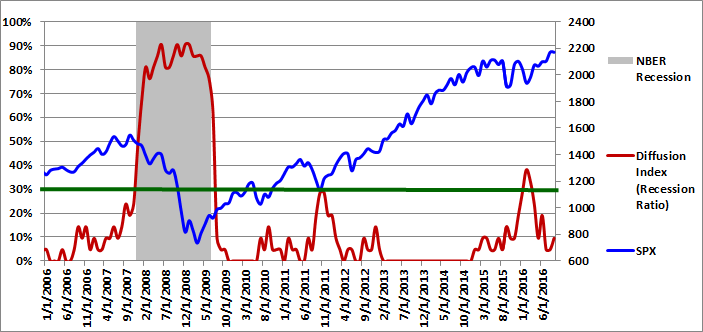
Figure 1: Diffusion Index 09-01-2016
Recession Slack Index
The Trader Edge recession slack index equals the median standardized deviation of the current value of the explanatory variables from their respective recession thresholds. The resulting value signifies the amount of slack or cushion relative to the recession threshold, expressed in terms of the number of standard deviations.
The gray shaded regions in Figure 2 below represent U.S. recessions as defined (after the fact) by the NBER. The median recession slack index is depicted in purple and is plotted against the right axis, which is expressed as the number of standard deviations above the recession threshold.
The dark-red, horizontal line at 0.50 standard deviations denotes a possible warning threshold for the recession slack index. Many of the past recessions began when the recession slack index crossed below 0.50. Similarly, many of the past recessions ended when the recession slack index crossed back above 0.0.
In mid-2014, the revised median recession slack index peaked at 1.15, far above the warning level of 0.50. The recession slack index declined significantly in 2015, with a high of 0.94 and a low of 0.39. The recession slack index fell further in early 2016, reaching its low of 0.31 in February, before rebounding over the next few months.
The recession slack index is currently 0.66, which is only slightly above the early-warning level of 0.50. Despite the increase in the diffusion index last month, the recession slack index also increased from 0.63 to 0.66. While recession risk has dissipated, the relatively low level of the slack index is the one troubling indicator in the model.
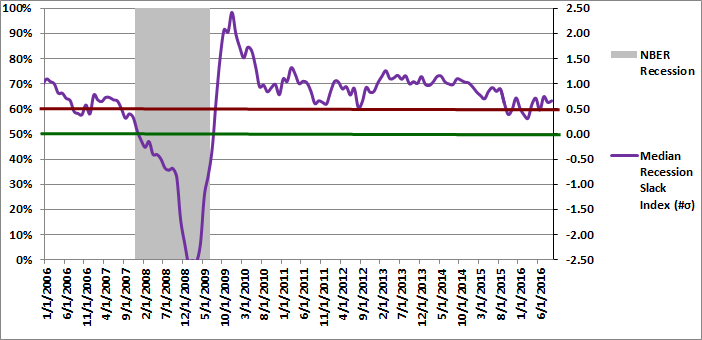
Figure 2: Median Recession Slack Index-09-01-2016
To gain further insight into the slack index, I recently went back and calculated a derivative value: the percentage of variables with increasing slack each month. The possible values range from zero percent to 100 percent. Due to the monthly volatility, I provide the three-month moving average of the percentage of variables with increasing slack in Figure 3, but I personally monitor the monthly percentages as well.
Slack is a standardized value, so it is directly comparable across all variables. More slack indicates a larger cushion relative to a recessionary environment. As a result, we would like to see as many variables as possible with increasing slack. Given the diverse nature of the explanatory variables, it is unusual to see more than 60% of the variables with increasing slack or fewer than 40% of the variables with increasing slack. These extreme values are significant and predictive of the near-term direction of economic growth and often the market.
Note the very sharp rebound in the percentage of variables with increasing slack before the end of the 2007-2008 great recession. Roughly 90% of the variables demonstrated increasing slack by the end of the recession. Similarly, the percentage of variables with increasing slack plummeted below 30% months before the 2007-2008 recession began. The percentage plunged below 30% again in early 2015, well before the softening in the economy and corresponding market pull-back later that year. The most recent percentage is 52.4%, which does not suggest a material near-term change in the strength of the U.S. economy.
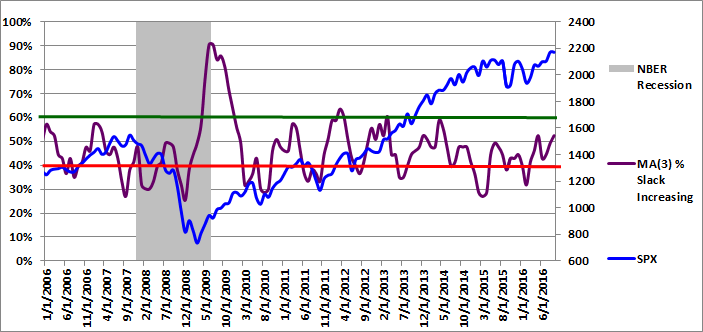
Figure 3: MA(3) % Slack Increasing 09-01-2016
The ability to track small variations and trend changes over time illustrates the advantage of monitoring the continuous recession slack index. The new slack variable will provide additional insight into the near-term direction of the economy and should be used in conjunction with the median recession slack index.
While it is useful to track the actual recession slack index values and percentage of variables with increasing slack, the diffusion percentages and slack index values are also used to generate the more intuitive probit and logit probability forecasts.
Aggregate Recession Probability Estimate
The Trader Edge aggregate recession model is the average of four models: the probit and logit models based on the diffusion index and the probit and logit models based on the recession slack index. The aggregate recession model estimates from 1/1/2006 to 09/01/2016 are depicted in Figure 4 below (red line - left vertical axis). The gray shaded regions represent NBER recessions and the blue line reflects the value of the S&P 500 index (right vertical axis). I suggest using a warning threshold of between 20-30% for the aggregate recession model (green horizontal line).
The aggregate recession model probability estimate increased from 0.1% in July 2016 to 0.2% in August 2016. According to the model, the probability that the U.S. is currently in a recession continues to be insignificant.
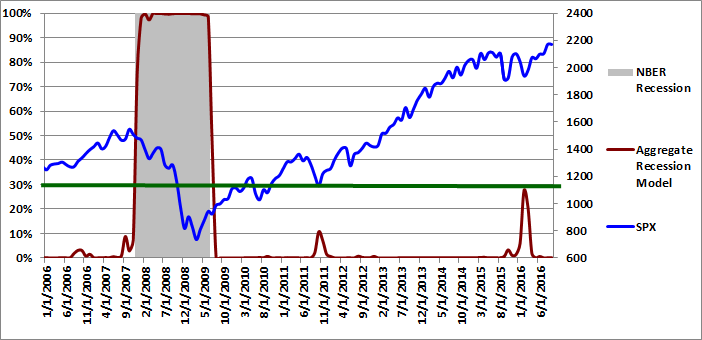
Figure 4: Aggregate Recession Model 09-01-2016
Aggregate Peak-Trough Probability Estimate
The peak-trough model forecasts are different from the recession model. The peak-trough models estimate the probability of the S&P 500 being between the peak and trough associated with an NBER recession. The S&P 500 typically peaks before recessions begin and bottoms out before recessions end. As a result, it is far more difficult for the peak-trough model to fit this data and the model forecasts have larger errors than the recession model.
The Trader Edge aggregate peak-trough model equals the weighted-average of nine different models: the probit and logit models based on the diffusion index, the probit and logit models based on the recession slack index, and five neural network models.
The aggregate peak-trough model estimates from 1/1/2006 to 9/01/2016 are depicted in Figure 5 below, which uses the same format as Figure 4, except that the shaded regions represent the periods between the peaks and troughs associated with NBER recessions.
The aggregate peak-trough model probability estimate for 09/01/2016 was 5.5%, which was up slightly from the revised value of 3.4% at the end of July 2016. The increase in recession risk is consistent with the increase in the diffusion index from 4.8% (1/21) to 9.5% (2/21), but inconsistent with the increase in the median recession slack index from 0.63 to 0.66.
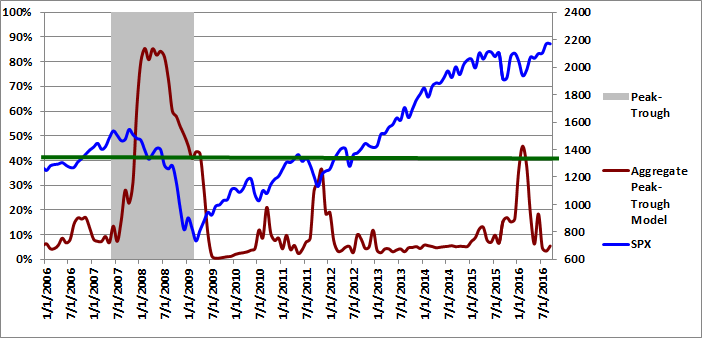
Figure 5: Aggregate Peak-Trough Model-09-01-2016
Conclusion
January and February 2016 marked a potential tipping point in U.S. recession risk, but that risk declined significantly in March and April. Recession risk fluctuated in subsequent months, but continued to decline. The recent decrease in recession risk is supported by both market and non-market variables, but the median recession slack index is still very close to the early warning threshold.
The use of several market-based indicators makes the Trader Edge recession model more responsive than many other models. Relative to traditional economic variables, market-based data have important advantages: they are highly predictive, they are never restated, and there is no lag in receiving the data. The market-based variables improved in March and April, reversed direction briefly, but are again trending higher.
However, reduced recession risk does not eliminate downside risk in the equity markets. The U.S. equity market remains significantly overvalued (highest price-to-sales ratio ever) and year-over-year corporate earnings have declined for five consecutive quarters (and recently suffered the worst quarterly decline since the Great Recession). Significant downside risk in the equity markets remains - even without a recession.
Unlike human prognosticators, the Trader Edge recession model is completely objective and has no ego. It is not burdened by the emotional need to defend past erroneous forecasts and will always consistently apply the insights gained from new data.
Print and Kindle Versions of Brian Johnson's 2nd Book are Available on Amazon (75% 5-Star Reviews)
Exploiting Earnings Volatility: An Innovative New Approach to Evaluating, Optimizing, and Trading Option Strategies to Profit from Earnings Announcements.
Print and Kindle Versions of Brian Johnson's 1st Book are Available on Amazon (79% 5-Star Reviews)
Option Strategy Risk / Return Ratios: A Revolutionary New Approach to Optimizing, Adjusting, and Trading Any Option Income Strategy
Feedback
Your comments, feedback, and questions are always welcome and appreciated. Please use the comment section at the bottom of this page or send me an email.
Referrals
If you found the information on www.TraderEdge.Net helpful, please pass along the link to your friends and colleagues or share the link with your social or professional networks.
The "Share / Save" button below contains links to all major social and professional networks. If you do not see your network listed, use the down-arrow to access the entire list of networking sites.
Thank you for your support.
Brian Johnson
Copyright 2016 - Trading Insights, LLC - All Rights Reserved.












Recession Model Forecast: 09-01-2016
The following article updates the diffusion index, recession slack index, aggregate recession model, and aggregate peak-trough model through August 2016. Throughout 2015, I added a number of new economic and market-based variables with very strong explanatory power to the recession model. This allowed me to cull three of the original independent variables with the weakest historical performance and most questionable cause and effect recessionary influence. I added one new variable with surprisingly strong explanatory power at the end of February 2016. The current 21-variable model has a diverse set of explanatory variables and is quite robust.
Each of the explanatory variables has predictive power individually; when combined together, the group of indicators is able to identify early recession warnings from a wide range of diverse market-based, fundamental, technical, and economic sources. After the latest additions and deletions, the total number of explanatory recession model variables is now 21. The current and historical data in this report reflect the current model configuration with all 21 variables.
Diffusion Index
The Trader Edge diffusion index equals the percentage of independent variables indicating a recession. With the recent changes, there are now a total of 21 explanatory variables, each with a unique look-back period and recession threshold. The resulting diffusion index and changes in the diffusion index are used to calculate the probit, logit, and neural network model forecasts.
The graph of the diffusion index from 1/1/2006 to 09/1/2016 is presented in Figure 1 below (in red - left axis). The gray shaded regions in Figure 1 below represent U.S. recessions as defined (after the fact) by the National Bureau of Economic Research (NBER). The value of the S&P 500 index is also included (in blue - right axis).
In December 2014, for the first time since December 2012, one of the 21 explanatory variables indicated a recessionary environment. In 2015 and 2016, the number of explanatory variables indicating a recession varied between one and eight, with the peak occurring in January of this year. Between February 2016 and May 2016, the number of explanatory variables indicating a recession varied between seven and four. The number dropped to one in July, before bouncing back to two in August. The number of variables indicating a recession is currently two out of 21 (9.5%).
As I have explained before, several of the explanatory variables are market-based. These variables respond very quickly to changing market conditions and are never revised. This makes the Trader Edge recession model much more responsive than other recession models. The sharp rebound in the price of risk-assets in March/April improved the U.S. economic outlook, which significantly reduced the risk of an imminent U.S. recession. The subsequent market gains and improving economic data further reduced the risk of a US recession.
Please note that past estimates and index values will change whenever the historical data is revised. All current and past forecasts and index calculations are based on the latest revised data from the current data set.
Figure 1: Diffusion Index 09-01-2016
Recession Slack Index
The Trader Edge recession slack index equals the median standardized deviation of the current value of the explanatory variables from their respective recession thresholds. The resulting value signifies the amount of slack or cushion relative to the recession threshold, expressed in terms of the number of standard deviations.
The gray shaded regions in Figure 2 below represent U.S. recessions as defined (after the fact) by the NBER. The median recession slack index is depicted in purple and is plotted against the right axis, which is expressed as the number of standard deviations above the recession threshold.
The dark-red, horizontal line at 0.50 standard deviations denotes a possible warning threshold for the recession slack index. Many of the past recessions began when the recession slack index crossed below 0.50. Similarly, many of the past recessions ended when the recession slack index crossed back above 0.0.
In mid-2014, the revised median recession slack index peaked at 1.15, far above the warning level of 0.50. The recession slack index declined significantly in 2015, with a high of 0.94 and a low of 0.39. The recession slack index fell further in early 2016, reaching its low of 0.31 in February, before rebounding over the next few months.
The recession slack index is currently 0.66, which is only slightly above the early-warning level of 0.50. Despite the increase in the diffusion index last month, the recession slack index also increased from 0.63 to 0.66. While recession risk has dissipated, the relatively low level of the slack index is the one troubling indicator in the model.
Figure 2: Median Recession Slack Index-09-01-2016
To gain further insight into the slack index, I recently went back and calculated a derivative value: the percentage of variables with increasing slack each month. The possible values range from zero percent to 100 percent. Due to the monthly volatility, I provide the three-month moving average of the percentage of variables with increasing slack in Figure 3, but I personally monitor the monthly percentages as well.
Slack is a standardized value, so it is directly comparable across all variables. More slack indicates a larger cushion relative to a recessionary environment. As a result, we would like to see as many variables as possible with increasing slack. Given the diverse nature of the explanatory variables, it is unusual to see more than 60% of the variables with increasing slack or fewer than 40% of the variables with increasing slack. These extreme values are significant and predictive of the near-term direction of economic growth and often the market.
Note the very sharp rebound in the percentage of variables with increasing slack before the end of the 2007-2008 great recession. Roughly 90% of the variables demonstrated increasing slack by the end of the recession. Similarly, the percentage of variables with increasing slack plummeted below 30% months before the 2007-2008 recession began. The percentage plunged below 30% again in early 2015, well before the softening in the economy and corresponding market pull-back later that year. The most recent percentage is 52.4%, which does not suggest a material near-term change in the strength of the U.S. economy.
Figure 3: MA(3) % Slack Increasing 09-01-2016
The ability to track small variations and trend changes over time illustrates the advantage of monitoring the continuous recession slack index. The new slack variable will provide additional insight into the near-term direction of the economy and should be used in conjunction with the median recession slack index.
While it is useful to track the actual recession slack index values and percentage of variables with increasing slack, the diffusion percentages and slack index values are also used to generate the more intuitive probit and logit probability forecasts.
Aggregate Recession Probability Estimate
The Trader Edge aggregate recession model is the average of four models: the probit and logit models based on the diffusion index and the probit and logit models based on the recession slack index. The aggregate recession model estimates from 1/1/2006 to 09/01/2016 are depicted in Figure 4 below (red line - left vertical axis). The gray shaded regions represent NBER recessions and the blue line reflects the value of the S&P 500 index (right vertical axis). I suggest using a warning threshold of between 20-30% for the aggregate recession model (green horizontal line).
The aggregate recession model probability estimate increased from 0.1% in July 2016 to 0.2% in August 2016. According to the model, the probability that the U.S. is currently in a recession continues to be insignificant.
Figure 4: Aggregate Recession Model 09-01-2016
Aggregate Peak-Trough Probability Estimate
The peak-trough model forecasts are different from the recession model. The peak-trough models estimate the probability of the S&P 500 being between the peak and trough associated with an NBER recession. The S&P 500 typically peaks before recessions begin and bottoms out before recessions end. As a result, it is far more difficult for the peak-trough model to fit this data and the model forecasts have larger errors than the recession model.
The Trader Edge aggregate peak-trough model equals the weighted-average of nine different models: the probit and logit models based on the diffusion index, the probit and logit models based on the recession slack index, and five neural network models.
The aggregate peak-trough model estimates from 1/1/2006 to 9/01/2016 are depicted in Figure 5 below, which uses the same format as Figure 4, except that the shaded regions represent the periods between the peaks and troughs associated with NBER recessions.
The aggregate peak-trough model probability estimate for 09/01/2016 was 5.5%, which was up slightly from the revised value of 3.4% at the end of July 2016. The increase in recession risk is consistent with the increase in the diffusion index from 4.8% (1/21) to 9.5% (2/21), but inconsistent with the increase in the median recession slack index from 0.63 to 0.66.
Figure 5: Aggregate Peak-Trough Model-09-01-2016
Conclusion
January and February 2016 marked a potential tipping point in U.S. recession risk, but that risk declined significantly in March and April. Recession risk fluctuated in subsequent months, but continued to decline. The recent decrease in recession risk is supported by both market and non-market variables, but the median recession slack index is still very close to the early warning threshold.
The use of several market-based indicators makes the Trader Edge recession model more responsive than many other models. Relative to traditional economic variables, market-based data have important advantages: they are highly predictive, they are never restated, and there is no lag in receiving the data. The market-based variables improved in March and April, reversed direction briefly, but are again trending higher.
However, reduced recession risk does not eliminate downside risk in the equity markets. The U.S. equity market remains significantly overvalued (highest price-to-sales ratio ever) and year-over-year corporate earnings have declined for five consecutive quarters (and recently suffered the worst quarterly decline since the Great Recession). Significant downside risk in the equity markets remains - even without a recession.
Unlike human prognosticators, the Trader Edge recession model is completely objective and has no ego. It is not burdened by the emotional need to defend past erroneous forecasts and will always consistently apply the insights gained from new data.
Print and Kindle Versions of Brian Johnson's 2nd Book are Available on Amazon (75% 5-Star Reviews)
Exploiting Earnings Volatility: An Innovative New Approach to Evaluating, Optimizing, and Trading Option Strategies to Profit from Earnings Announcements.
Print and Kindle Versions of Brian Johnson's 1st Book are Available on Amazon (79% 5-Star Reviews)
Option Strategy Risk / Return Ratios: A Revolutionary New Approach to Optimizing, Adjusting, and Trading Any Option Income Strategy
Feedback
Your comments, feedback, and questions are always welcome and appreciated. Please use the comment section at the bottom of this page or send me an email.
Referrals
If you found the information on www.TraderEdge.Net helpful, please pass along the link to your friends and colleagues or share the link with your social or professional networks.
The "Share / Save" button below contains links to all major social and professional networks. If you do not see your network listed, use the down-arrow to access the entire list of networking sites.
Thank you for your support.
Brian Johnson
Copyright 2016 - Trading Insights, LLC - All Rights Reserved.
About Brian Johnson
I have been an investment professional for over 30 years. I worked as a fixed income portfolio manager, personally managing over $13 billion in assets for institutional clients. I was also the President of a financial consulting and software development firm, developing artificial intelligence based forecasting and risk management systems for institutional investment managers. I am now a full-time proprietary trader in options, futures, stocks, and ETFs using both algorithmic and discretionary trading strategies. In addition to my professional investment experience, I designed and taught courses in financial derivatives for both MBA and undergraduate business programs on a part-time basis for a number of years. I have also written four books on options and derivative strategies.